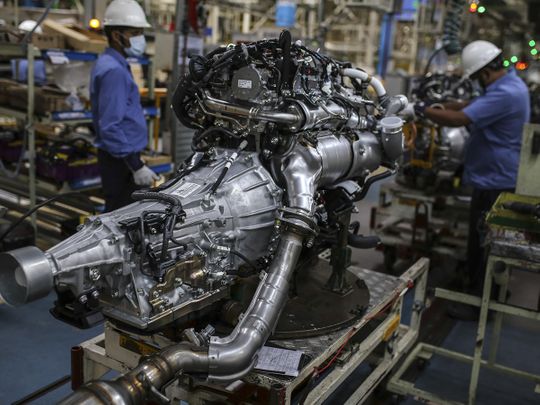
Dubai: As recovery of emerging markets began to slow after a brief initial pick-up, data points to a rebound that would be dragged out further over the coming quarters amid a pandemic that refuses to let up.
“After an initial burst of growth following the lifting of national lockdowns, the latest activity data and mobility indicators point to a slower pace of recovery in most EMs in recent months,” cautioned Edward Glossop, an Emerging Markets Economist at Capital Economics. “This looks set to continue in the next few quarters.”
Emerging threats
Analysts have been warning how the potential for renewed lockdowns, a looming fiscal cliff in the US, political uncertainty due to Brexit, and the possibility of a contested US election all make for potential complexities in the months ahead. Glossop noted the escalating outbreaks in Central Europe are starting to challenge optimism about the strength of the recovery there.
“And recoveries in the likes of India and much of Latin America – where new cases remain high – will be constrained by precautionary behaviour and tight restrictions on activity,” Glossop added. “The exception in all of this is China, where its domestic-focussed rebound is in full swing and looks set to continue on the back of policy support and improving consumer confidence.”
Shift seen in investors’ upbeat stance?
A resurgence in COVID-19 infections across Europe, along with weak economic indicators, led world stocks to mark some of their worst weekly declines in months. From an investment perspective, research analysts are now warning that the economic outlook has become as uncertain as ever, as markets enter the final stretch of 2020.
Investors have, however, up until last week been turning more upbeat about the outlook for emerging markets, an earlier HSBC survey showed, although regional differences have sharpened with money managers less positive than three months ago about Latin America. But the positive sentiment is seen shifting.
Mixed sentiments
MSCI’s emerging market equity benchmark has fallen by more than 5 per cent since the start of the year, while the developed market index is down 2.8 per cent. In equities, two thirds expected developing market stocks to rise, with 55 per cent expecting them to outperform developed peers, the survey indicated.
“Last month EMs suffered the largest net outflow of capital since the height of the market turmoil in March. Net outflows look set to persist in the coming months, although they should remain small compared to past standards, limiting the macroeconomic fallout,” Glossop said.
Some 46 per cent of investors have turned comparatively bullish on developing nations, compared with less than a quarter in June, and more than two-thirds are expecting growth to accelerate over the coming 12 months, showed an HSBC survey that gathered data from 195 institutions with $650 billion of emerging market assets under management during a period between August 11 and September 15.
Outlook on asset classes
Asia – which appeared to be leading the improvement in sentiment – still stands out as the region with comparatively more favourable outlook across all asset classes, while Latin America has the least favourable outlook. There was a deterioration in the growth expectations for the regions highly exposed to commodity prices.
Fund managers felt more optimistic about developing market currencies, HSBC said, with 38 per cent expecting them to stay broadly stable. In fixed income markets, the survey showed a shift from hard currency bonds to local markets since June.
Inflation expectations tick up
Inflation expectations also crept up, with 50 per cent of those surveyed now predicting rising price pressures in the year ahead compared to 37 per cent in June. “A number of EMs – notably Brazil, Mexico and Korea – have experienced strong increases in food inflation in recent months, which have pushed up headline rates,” Glossop added.
“But we think that food inflation in the worst-affected countries is close to a peak. Even if it continues to edge higher for a few more months, most central banks are unlikely to be spooked.”
As recoveries in the developed world shift into a lower gear, this will weigh on EM exports, viewed analysts at Capital Economics. They added that while the rebound in EM exports continued in July, further gains is seen harder to come by from here – with the initial boost from re-opening economies likely to fade and the slowing global recovery dimming the outlook for exporters.








